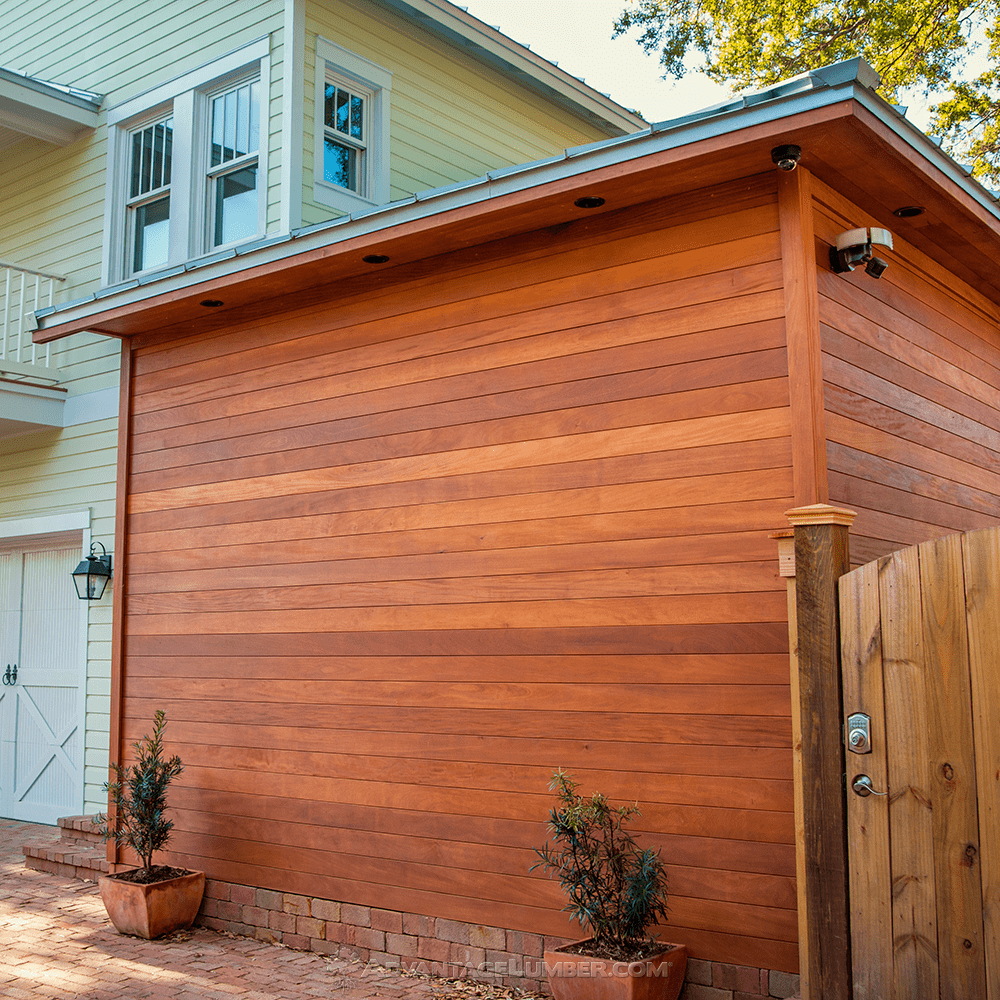A rainscreen is an exterior wall detail where the siding (wall cladding) stands off from the moisture-resistant surface of an air barrier applied to the sheathing (sheeting) to create a capillary break and to allow drainage and evaporation.
The rainscreen is the siding itself but the term rainscreen implies a system of building. Ideally, the rainscreen prevents the wall air/moisture barrier on sheathing from getting wet.
In a rainscreen construction, the cladding material (siding) is separated from the rest of the wall assembly. This separation allows any moisture that penetrates the cladding to drain away from the building and also allows for air movement, which helps the wall assembly dry. This can extend the life of the building materials and improve indoor air quality.

The key components of a rainscreen include:
- Outer layer (cladding): This is the exposed layer, often made of wood, metal, vinyl, or masonry, which primarily provides weather protection and aesthetic appeal.
- Air gap/cavity: A crucial part of the rainscreen, this space allows for water drainage and air circulation, helping to dry out any moisture that has penetrated the outer layer.
- Weather-resistant barrier (WRB): This layer blocks water while allowing water vapor to escape, helping to prevent the accumulation of moisture in the wall assembly.
- Structural sheathing: This is the part of the wall assembly to which the WRB is usually attached. It provides strength and rigidity to the wall.
- Support framing: The structural component of the wall, usually made of wood or metal studs.
Rainscreen systems can vary in complexity and design but the basic principle remains the same: to prevent water damage to the building by allowing for drainage and evaporation of moisture.
What Woods Work Best for Rainscreen Siding?
The choice of wood is critical for the longevity, aesthetics, and functionality of rainscreen siding. This blog post will explore some of the best woods for this purpose: Ipe, Cumaru, Garapa, Brazilian Redwood, Tigerwood, Teak, Mahogany, and Thermally Modified Ash.
1. Ipe Rainscreen Siding
Ipe, also known as Brazilian Walnut, is renowned for its incredible hardness and durability. It’s naturally resistant to rot, decay, and insect infestation, making it an excellent choice for rainscreen siding. Its rich brown color, which weathers gracefully into a silver-grey hue, adds to its aesthetic appeal. However, its density can make it challenging to work with, requiring pre-drilling for fasteners.
2. Cumaru Rainscreen Siding
Cumaru, often referred to as Brazilian Teak, is another dense, durable wood. It shares many of the qualities of Ipe, including resistance to rot and insects. It’s slightly less hard than Ipe, making it somewhat easier to work with. Cumaru’s unique reddish-brown color provides a striking appearance. It’s also a more cost effective than Ipe which makes it more attractive than Ipe for those looking to save some money.
3. Garapa Rainscreen Siding
Garapa, or Brazilian Ash, is lighter in color, with a beautiful golden to yellowish-brown hue. It’s a bit softer than Ipe and Cumaru, but still offers excellent durability and resistance to rot and insects. Garapa’s lighter color can be a great way to brighten up a building’s exterior while still providing the needed protection.
4. Brazilian Redwood Rainscreen Siding
Brazilian Redwood, also known as Massaranduba, is valued for its deep, rich red tones. It’s almost as durable as Ipe but with a distinct color that sets it apart. Like the other hardwoods, it resists rot and insect damage, making it a solid choice for rainscreen siding.
5. Tigerwood Rainscreen Siding
Tigerwood, named for its striking grain pattern, which resembles tiger stripes, is a visually captivating option. It’s not just about looks; Tigerwood is also durable and resistant to rot and insects. Its unique appearance can make any building stand out.
6. Teak Rainscreen Siding

Teak is a well-known wood in the world of exterior applications. Its natural oils provide resistance to water, making it an ideal choice for rainscreen siding. Though not as hard as some of the other options, Teak’s longevity in outdoor conditions is well-proven.
7. Mahogany Rainscreen Siding
Mahogany has been a long-time favorite for exterior applications due to its beauty and durability. It’s resistant to rot and decay, although it’s softer than the Brazilian hardwoods. Mahogany’s classic look is perfect for those seeking a traditional aesthetic.
8. Thermally Modified Ash Rainscreen Siding
Thermally Modified Ash is not a tropical hardwood, but it’s an excellent choice for those looking for an eco-friendly and innovative material. The thermal modification process enhances its resistance to rot and decay, making it suitable for rainscreen applications. Its beautiful grain and color variation provide a unique and modern look.
Conclusion
Selecting the right wood for rainscreen siding involves balancing durability, aesthetics, and workability. Ipe, Cumaru, Garapa, Brazilian Redwood, Tigerwood, Teak, Mahogany, and Thermally Modified Ash each offer unique qualities that make them suitable for this application. Consider the specific needs of your project and the desired aesthetic to choose the best wood for your rainscreen siding.







